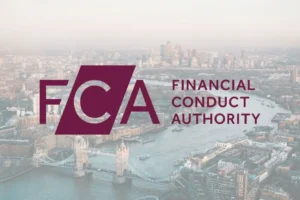Money laundering remains a significant challenge for businesses and financial institutions worldwide, and legal firms are no exception. Criminals constantly develop new methods to disguise illicit funds, making it essential for legal professionals to stay vigilant and recognize warning signs early on. Legal firms can simplify client onboarding with Idenfo Direct, which provides robust identity verification and risk assessment tools for regulatory compliance.
In this blog post, we will explore ten red flags that indicate potential money laundering activities and discuss how legal firms can address these challenges.
1. Unusual Ownership Structures
One of the most common red flags is the presence of complex or unusual ownership structures that make it difficult to identify the ultimate beneficial owner (UBO). This often involves shell companies, trusts, or offshore entities designed to obscure the true owner’s identity. Legal firms must perform thorough due diligence using advanced verification tools like Idenfo Direct to ensure transparency in ownership.
2. Frequent Cash Transactions
Cash transactions that do not match a client’s profile or business operations can indicate money laundering. For example, if a client makes large cash deposits without a clear business rationale, it warrants closer examination. Implementing real-time monitoring through automated tools helps detect unusual patterns and triggers alerts for further investigation.
3. Lifestyle Inconsistencies
When a client’s wealth or lifestyle far exceeds their known income, it could be a sign of illicit activity. Legal firms must carefully assess the source of funds and question any inconsistencies, especially when dealing with high-net-worth individuals. Utilizing risk assessment solutions can streamline this process and ensure compliance.
4. Transactions Involving High-Risk Jurisdictions
Clients involved in transactions with countries known for lax regulations or high crime rates pose a significant risk. Legal firms must carefully evaluate transactions with these regions and conduct enhanced due diligence to verify legitimacy. Idenfo Direct offers comprehensive jurisdictional risk analysis to help legal professionals identify and mitigate risks.
5. Changes in Transaction Patterns
Money launderers often change their transaction patterns to avoid detection. A sudden increase or decrease in transaction volume, or the involvement of previously unknown counterparties, should raise red flags. Monitoring these patterns is crucial for maintaining compliance and preventing criminal activity.
6. Unusual Payment Methods
Using unconventional or high-risk payment methods—such as virtual currencies or prepaid cards—can indicate attempts to obscure the origin of funds. Legal firms must be particularly cautious when dealing with non-traditional payment options and should utilize risk assessment tools to identify potential threats.
7. Uncooperative Clients
Clients who refuse to provide necessary information or are overly secretive about their business dealings might be attempting to hide something. This reluctance to disclose information, especially during the onboarding process, is a major warning sign. Legal firms can simplify client onboarding with Idenfo Direct by automating identity checks and ensuring compliance with AML regulations.
8. Overcomplicated Transactions
Criminals often use intricate financial transactions to make illicit funds appear legitimate. This can include rapid movement of funds between accounts or layering transactions across multiple institutions. Legal firms should monitor for overly complex financial activities that lack a logical business purpose.
9. Use of Intermediaries
Money launderers may use intermediaries to distance themselves from illegal funds. Be cautious of clients who insist on using third parties for payments or transactions without a clear reason. Verifying the identities of all involved parties helps reduce the risk of being implicated in money laundering schemes.
10. Rapid Large Transactions
Large payments made without apparent business justification or settled unusually quickly can indicate money laundering. Legal firms must assess the legitimacy of such transactions and document their findings to ensure compliance.
How Idenfo Direct Can Help Legal Firms
Legal firms can simplify client onboarding with Idenfo Direct, a comprehensive solution that offers robust identity verification and risk assessment tools. By automating AML and KYC processes, Idenfo Direct helps firms stay compliant while minimizing the risk of money laundering. The platform's real-time monitoring and advanced analytics enable legal professionals to identify suspicious patterns and take proactive measures.
Staying vigilant against money laundering is essential for legal firms aiming to maintain credibility and regulatory compliance. By recognizing these red flags and leveraging solutions like Idenfo Direct, firms can enhance their AML efforts and safeguard their reputation.









